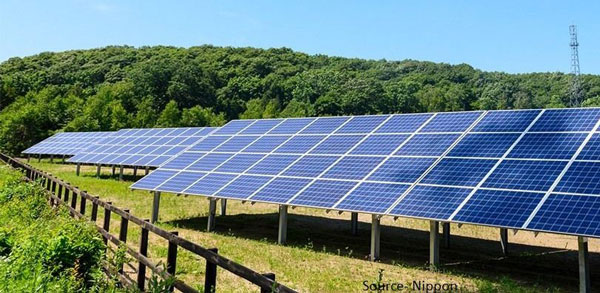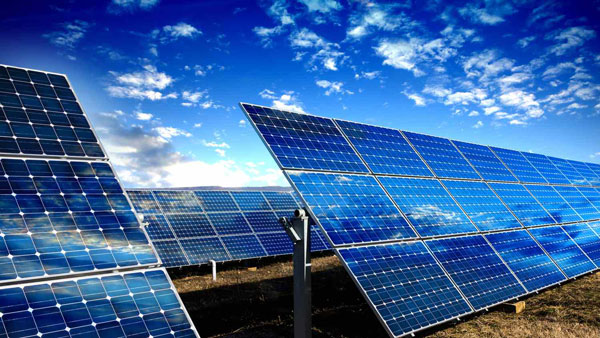Decreased Power Output
If your solar panels are producing less electricity, that is a big red flag your system may need to be serviced sooner rather than later. A number of things can end up causing this, from damage to the device, through environmental factors or parts failing.
Identifying Decreased Output
Measure the reductionBefore you can go about addressing any loss of power, you need to be able to correctlly measure it. This can be accomplished by monitoring system performance data, and comparing current output levels to historical data under similar sunlight conditions. For instance, if a system that produces 500 watts at noon is now producing only 350 watts, you might have a problem.
Causes for Reduced Efficiency
Reduced power output - One of the most common problems, soiling/accounts for a significant portion of the decrease in energy generation experienced by solar panels. Further studies have shown that panels with a dirt level greater than 2.5 lose around 20-25% of their efficiency due to the soiling process. Or, shade from new construction or trees that have grown since the system was installed.
Technical Failures
More important to homeowners, of course, are technical failures - a failing inverter, for example, or compromised wiring that reduces the power output from the array. Inverters have a shorter lifespan of 10-15 years compared to the panels, and they are more probable to be one of the first components to fail, contributing directly to system inefficiency.
Environmental Factors
Environmental impacts like micro-cracks due to thermal cycles, PID (Potential Induced Degradation) or snail trails also contributes to the reduced output. Take PID as an example, if not solved, the output of the panel will fall by 30% for the first few years.
Immediate Actions
When noticing a major decrease in the output, quick steps such as cleaning the panels, checking for visible damages, and calling a technician should be in order. These measures are necessary to stop the hemorrhaging and reestablish system health.

Physical Damage
Solid matter impacting solar panels is a common and critical sign which would be limited. Damage from environmental causes, animal disturbance or human intervention can be the cause. The earlier you discover and attack these damages, the less degrading your performance will become...
Types of Physical Damage
Common physical damage: The daily use and wear of your device will eventually cause either some or all of the most common types of physical damage (cracks, scratches, shattered glass). Cracks may look small and indiscernible at a distance yet these can reduce the panel's capability to function effectively. A single cracked cell in a solar panel, by comparison, could reduce output of a whole array by over 10%. The photovoltaic layers can be further damaged if scratches cause the elements to be exposed to the environment that they were designed to protect.
Impact of Physical Damage
This causes no less harm to appearance of the solar batteries, but also to their operability. Cracks and scratches on a cell can cause up to 15-20% of power output reduction in a study conducted. A fix must be made quickly in order to make it functional again.
Detection and Assessment
Performing regular visual inspections is an essential tool in identifying physical harm. Drone utilisation or closer manual inspections might be able to pick-up on smaller, less obvious defects. In addition, thermal imaging can be used to scan for hidden cracks or junction box failures that may not be discernible with the naked eye.
Preventative Steps And Fixes
For the purpose of physical harm, it is necessary to certify that solar panels are maintained by experts in their installation and leftover debris or droopy branches that could fall over the panels must be cleared. If they are damaged, have the panels checked by a professional to determine whether repair or replacement is necessary. While hosts can use special sealants to prevent moisture ingress with minor scratches, cracked panels usually need to be replaced in order for the system to maintain its efficiency.
Inverter Problems
Inverters are critical in converting that DC electricity that is produced by solar panels, into AC electricity which allows it to be used by your home appliances and back out onto the grid. Inverter failures are a big deal as inverters are the heart of the solar system and we're here to sing about it!
Symptoms of Inverter Failure
A big hint is that you see the system is producing plenty of power (as you will know when your sun eye gets dark, because you are looking regularly) but not much seems to be going into the inverter. Let me give you an example, if the solar panels are producing 500 watts but the inverter says that it is taking 300 watts input from solar panels then this is the sign of inverter fault. Inverter: Error messages, accompanied with shutdowns or alarms as much as every 5 minutes
Factors Leading to Inverter Failure
Generally, inverter failures are heat related - often from poor installation or lack of air circulation causing them to overheat. Overheating of the inverter will reduce lifespan of all these components. Lightning or grid fluctuation frequently create electrical surges which can harm the sensitive electronics within the inverter.
Diagnosing Inverter Issues
Where inverter issues are concerned, diagnosing them will usually entail observing the output from the system via its digital display or monitoring service. In addition, technicians would use multimeters and clamp meters to check the voltage and current flow in order to assess performance and to identify issues.
Do When You Face Inverter Problems
If your IGBT powers are not functioning the right way, it would be best to employ an expert technician who can accurately check and repair or replace the component if needed. In some cases, you can reset the inverter or update its firmware to get it to work perfectly again, but there will be times when it needs a bit of replacing.
Unusual Noises or Odors
This way, next time you hear or smell signs and symptoms with your solar panel system, you realize that these sounds must not be ignored mainly because there might be an issue someplace within it that has to be taken care of to ensure the protection and effectiveness when working with it for as much time as possible.
Identifying Unusual Noises
Strange sounds, such as wailing, scratching or popping sounds, may be the result of the inverter pulling power out of the system from connections or even from the solar panelsairo. And any of these noises may well be among the electrical problems, such as loose connections or sparking, and these are prime causes of fires. A buzzing noise is common when the wiring connections are loose or the inverter component fails, like this one.
Detecting Odd Odors
The thing with strange smells, burning smell and such is that those can be signs of components overheating or insulation burning. Most of the time, these smells come with a rise in temperature at the source which produces these odors. For example, one possible source of a burning plastic smell is an overheating inverter or the insulation on the wiring and connections in degraded by excessive hot temperatures or electrical faults.
Diagnosing the Source
The process for diagnosing these problems includes inspecting the solar panel system, which includes checking out its inverter, panels and all its wiring connections. Common in electrical faults, hot spots can be identified with thermal cameras. Scents: any signs or smells should be traced back to the source by a technician certified to quickly and safely identify the culprit and prescribe corrective action.
Immediate Actions to Take
Immediate steps involve turning off the system as soon as possible, if you can do so safely and contacting a professional. Running a faulty system can cause more damage or be disastrous, such as the risk of fire, if your AC makes any odd sounds or gives off an unusual smell. So, addressing these signs timely helps in the safety and life of the solar panel system.

Corrosion or Discoloration
Corrosion or discolouration signifies their need for professional inspection and maintenance, as failing to act will continue to damage the panel and perform less efficiently.
Types and Causes of Corrosion
When corrosion occurs, the metal components of a solar panel that are most commonly affected include the frame and fasteners. This type of blistering is typically a result of the presence of corrosive environments - such as high salinity in zones close to the coast. Resulting from corrosion which degrade electrical connections which are vital for the proper functioning of the solar panels. Panels in coastal areas might be making 3-5% less power than if they were not near the coast based on a statistical analysis.
Identifying Discoloration
Discoloration of the solar cells take place and it can occur due to UV exposure, chemicals leaking from panel components or even water ingress. Solar cells require sunlight to create energy, so discolored areas will prevent sunshine from ever reaching the solar cells-- limiting the output of the panel. A study found that UV induced discoloration could result in a panel losing up to 1-2% of its output every year, depending on the extent of discoloration and the type of solar cells in use.
Assessment Techniques
Visual inspections are necessary to evaluate the severity of corrosion or discolouration. Areas that are not easily accessible are often evaluated by using close-up photography and drone imagery. To infer the rate of corrosion and remaining life expectancy in affected components, Electrochemical Impedance Spectroscopy for determining Corrosion.
Immediate Actions
It is recommended that any panels exhibiting signs of corrosion are cleaned, and any affected areas treated with an anti-corrosive treatment (or the corroded parts replaced) to prevent against further damage. Slightly stained panels might require additional in-depth examination to see if they can be cleaned or need to be exchanged. Protecting the surface of your solar panel can go a long way to ensuring its efficient lifetime and operation for longer periods.



